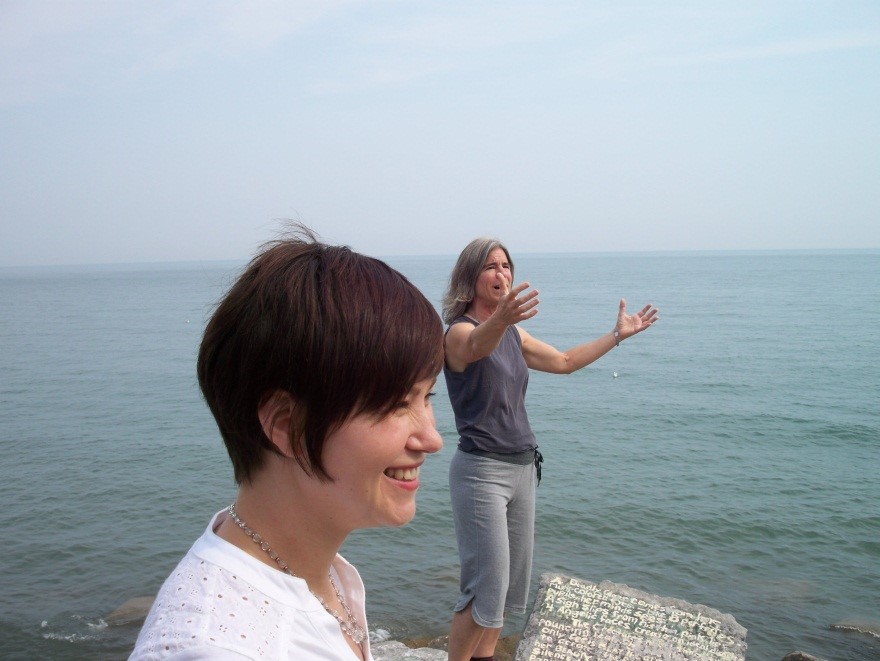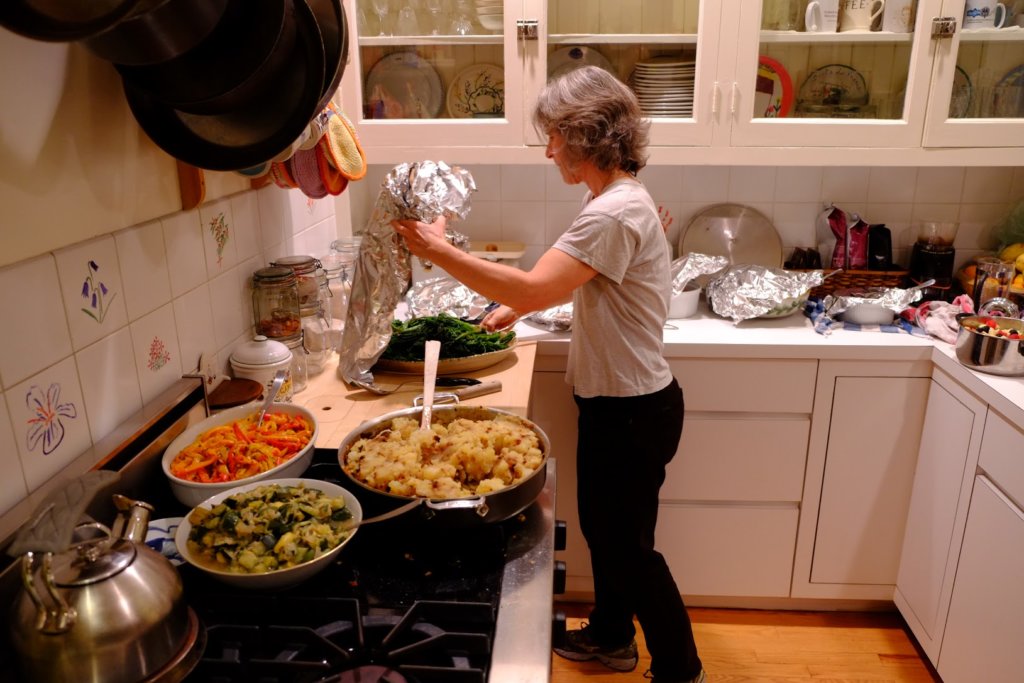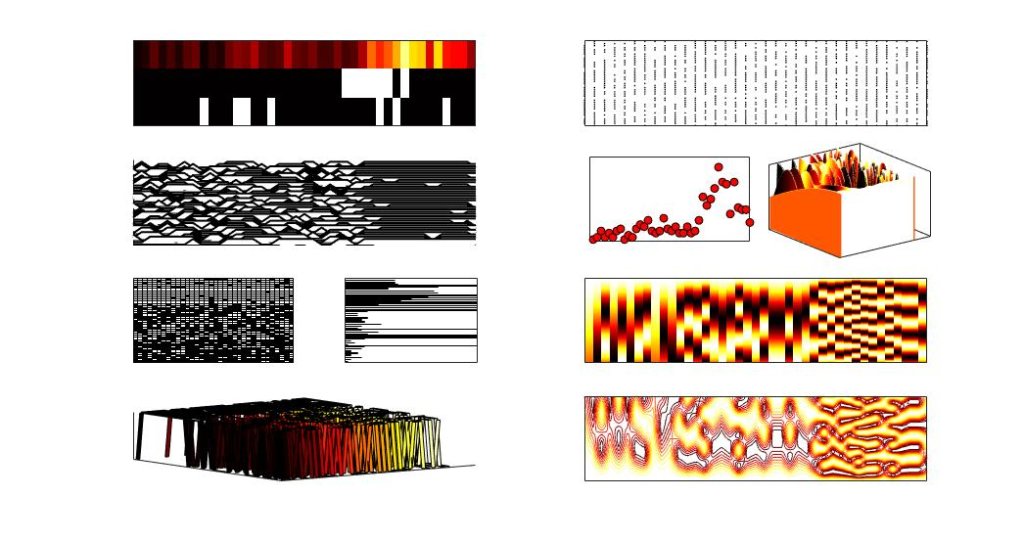The Dynamic Range of Nina Kraus
“We are investigating speech perception from a neurophysiologic perspective.” So begins the first article I read from Nina Kraus (Kraus et al., Ear and Hearing, 1995). Little did I know when I was assigned to read this article for a class in 1999 that four years down the road, I would begin a 10-year stint in Nina’s lab and that this “we” would someday include me. When I took this class, I was a graduate student in Generative Linguistics who had become unsatisfied with the black-box nature of linguistic theory and started to turn to neuroscience to understand where and how it all happened in the brain. So, I traded in syntactic trees for axonal branches when I signed up for a course called Neural Representation of Speech with Drs. Keith Kluender and Bill Rhode at the University of Wisconsin. On the reading list were names like Eric Young, Xioquin Wang, Michael Merzenich, Christoph Schreiner, Bertrand Delgutte, Nelson Kiang…and Nina Kraus. A few years later, I moved to Chicago, and Keith Kluender suggested I reach out to Nina about opportunities in her lab. My luck could not have been better, as shortly before making contact, Nina’s R01 grant “Neural Representation of Acoustic Elements of Speech” was renewed for another five years, and she had money to hire new staff. At my interview, she asked me how I felt about data pre-processing. Not entirely sure what she meant, I took my best stab at the question by responding, “It’s a necessary evil.” That must have sealed the deal.
My first tasks in the lab were to track down a copy of a movie on snake handling for the next lab meeting (a story for another day), organize the “backroom,” and automate how the Mismatch Negativity data were being processed. Nina must have been impressed with my skill set, as a few months later, she agreed to allow me to work remotely for the lab doing computer programming after my husband and I moved to New York. We returned to Chicago in 2005. I continued to wear many hats in the lab: software developer, chief bottle washer, industry liaison, zookeeper, lab manager (alongside Trent Nicol), and eventually graduate student. Over the decade, I was fortunate to be part of a lot of amazing work on neural plasticity and development – work that has set the foundation for the rest of my career.
During my time in the Kraus Lab, I learned a few of Nina’s favorite words: biologic, idiosyncratic, different (not to be interchanged with differential), and who could forget ear condom. I also saw many students come and go and witness the softer and louder moments of Nina’s personal and professional life. I have been privileged to get to know her full dynamic range and experience the many dimensions of Nina.

Nina, The Force of Nature
Nina is unstoppable. Her prodigious career -- marked by some 400 publications, 20 plus grants, and countless talks – is showcased beautifully on her pride and joy, the lab’s website (www.brainvolts.northwestern.edu). While Nina remains as productive as ever, sleep has become more important to her in recent years. Gone are the days of late-night emails, written in all small letters, that I had come to expect during my time in her lab. But even as she’s mellowed (a bit) over the years, her energy is bountiful, and her physical fitness remains legendary. Few people can do one-armed push-ups, but yet few people are Nina Kraus.
Nina, The Pragmatist
Pragmatism is the necessity of productivity. Achieving all that Nina has achieved while keeping up with her highly-accomplished three sons has required uncluttering and uncomplicating other areas of her life. No place is Nina’s no muss no fuss style clear than in her lunch choices. For much of the time I spent in her lab, Nina ate the same lunch nearly every day: a toasted bagel and a can of sardines. This limited lunch menu was not because Nina doesn’t like food or can’t cook. Quite the contrary. Her kitchen is always overflowing with mountains of colorful and delicious food, made with the love and care you’d expect from the Italian mother she is.

Nina, The Cheerleader
As a mentor, Nina brings out the best in me, and over the years, she has given me the resources, space, and safety net I needed to thrive. Today, now as I direct my own lab, Nina remains my biggest cheerleader, champion, and trusted advisor. In my 10 years in her lab, I cannot recall a single time that she forgot or canceled a meeting with me. Even on short notice, Nina managed to squeeze in a meeting or give feedback on a paper when I needed it. The same holds today – she always makes time for me when I need the kind of pep talk that only Nina can give. It was not until I transitioned to running my lab, and I found myself needing to be in two places at once, that I truly recognized and understood Nina’s superhuman capacities as a mentor and the true generosity she shows the people in her lab.
Nina, The Teacher
Although I never took a class with Nina, she has taught me a great many things over the years, some directly and some indirectly. Many of these I now try to impart to my students:
- Surround yourself with “big brains” if you want to tackle big questions.
- Work is important, but so too is not working.
- Love your data. Treat it like a precious commodity. Study it from all angles using all your senses.
- Practice the art of science. Share and express the beauty of scientific data through sound and images. (Inspired by this, I’ve created a data quilt from Nina’s publication and grant record history.
- Tell a story when communicating science. Engage your audience, write and speak in plain language, and by all means leave the lectern behind.
- Be prepared and get it done. If there was anything that I left Nina’s lab knowing how to do, it was the skill of getting things done, not just on time but ahead of time.
- And most importantly…Be a human first and a scientist second.

Through her research and mentorship, Nina has made a lasting impact on our field and our understanding of the neurophysiological basis of speech perception. I feel fortunate that she took a chance on me, and I thank her for her continued support and inspiration. It has been my honor to be part of her “we” for the last 18+ years.

